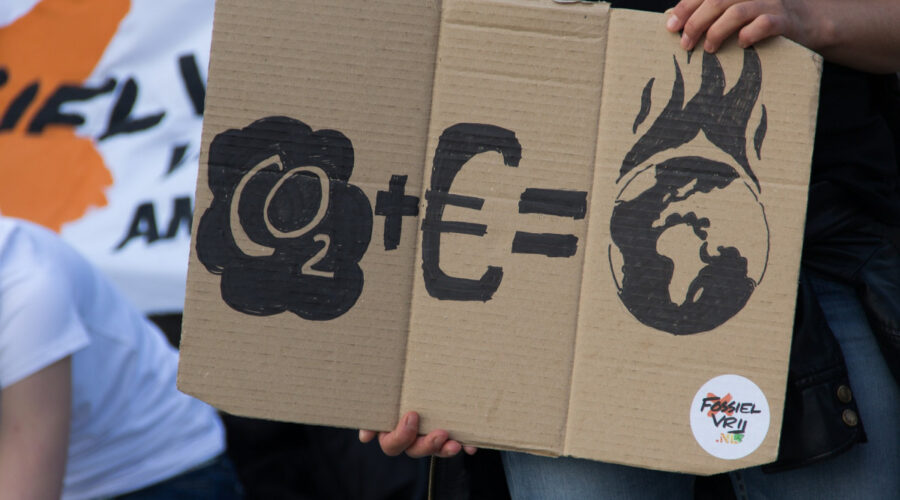The latest report of the IPCC is clear: the window of opportunity to reverse global warming is shrinking. Our economies must go through profound transformations at increasing speed and scale. Although carbon pricing has gained prominence worldwide as one of the key policies to foster decarbonization, setting any price may not be enough anymore.
According to leading experts of the High-Level Commission on Carbon Prices, we need at a minimum a carbon price between US$40–80/tCO2 by 2020 to unlock its true potential[1] and limit global warming to 2°C.[2] While by 2021, carbon pricing instruments will cover 20 percent of global emissions, to date, only around 3 percent of those emissions fall within this range. These figures show the adoption of ambitious carbon prices is still very limited. This may result from factors such as weak social support and strong lobby from the industry sector.
Cases of opposition to carbon pricing (or increases in fossil fuel prices) have occurred across several countries, such as the yellow vests movement in France. Social unrest occurred in Ecuador and in Chile due to the elimination of gasoline subsidies and the increase in public transportation fares, respectively. More recently, a voter rejection happened in Switzerland to adopt more ambitious climate measures such as a car fuel levy and a tax on airplane tickets.
A common argument against carbon pricing across the different opposition groups is that it may affect jobs in carbon-intensive industries and impose negative impacts, especially in low-income populations heavily dependent on fossil fuels use. At the corporate level, a popular claim is that carbon pricing threatens economic competitiveness, job creation, and economic growth.
Such assertions have become even more salient in the context of the COVID -19 pandemic. The priority of the governments has been to push for economic recovery without considering environmental criteria. In this regard, the UN stated that only 18 percent of the recovery spending of the leading economies has been green and sustainable.[3] Building on these findings, the UN concludes that ‘global green spending does not match the severity of the three planetary crises of climate change, nature loss, and pollution, leaving significant social and long-term economic benefits off the table.’
Despite this discouraging trend, we believe that carbon pricing can serve the double purpose of promoting a green economic recovery and tackling social inequality in the context of competing priorities. However, the potential of this opportunity depends on integrating notions of social justice and fairness into policy design. Specifically, governments should use carbon pricing revenues to address the distributional impacts of the low-carbon transition. This ‘just transition’ approach is even more urgent now that climate change and the pandemic have further accentuated the income and inequality gap.
Some jurisdictions are already taking concrete steps on the path towards a just transition. For example, the European Union announced a climate action social fund funded by revenues of an expanded carbon market covering heating and transport fuels. The fund will alleviate the increased price of heating and transport fuel prices for the most vulnerable people. Additionally, in May 2021, the European Parliament approved a Just Transition Fund to protect vulnerable communities from the economic impacts of dismantling polluting industries. Similarly, California has identified disadvantaged communities and low-income populations that may be strongly impacted by the cap-and-trade system and established a program that helps them transition away from fossil fuels while tackling the deeper roots of inequality.
Just as importantly, to win broad support for carbon pricing, governments need to not only ensure it is fair, but that it is seen to be fair. Strategic communication plays a crucial role in ensuring people are aware of the link between the carbon price and its benefits. Two-way communication also guarantees people have their voices heard and can help policymakers identify the main concerns and needs of the stakeholders to improve policy design.
Carbon pricing represents an opportunity to support a green economic recovery and ensure that we continue on a low-carbon path. But for this to happen, it must come at a price high enough to bring about the transformation we need and embrace the deep connection with social fairness and environmental justice.
Footnotes:
[1] Considering that the carbon pricing instrument works alongside complementary policies that tackle other climate change challenges and market failures.
[2] However, limiting the rise in global temperatures to 1.5 C, would require a carbon price of at least US$160/tCO2 by 2030 according to other analysis.
[3] The report ‘Are We Building Back Better? Evidence from 2020 and Pathways for Inclusive Green Recovery Spending’ analyses more than 3500 fiscal policies adopted by major economies in 2020 and calls for governments to invest more sustainably. Available at: https://www.unep.org/resources/publication/are-we-building-back-better-evidence-2020-and-pathways-inclusive-green


